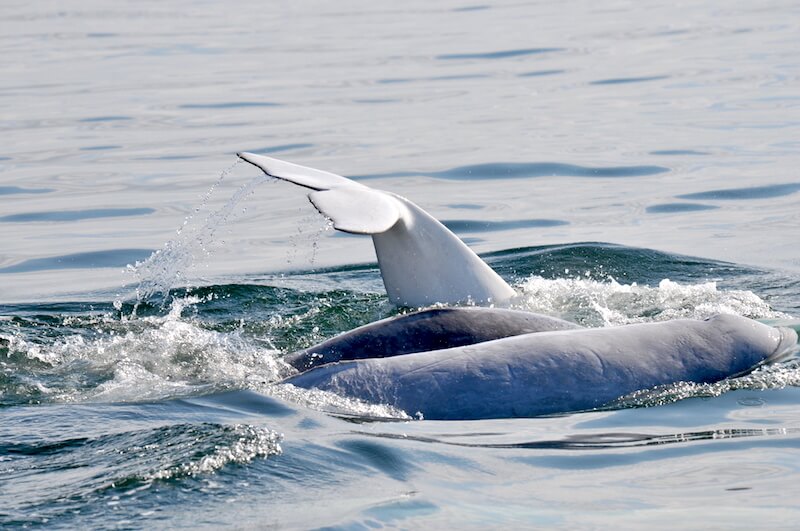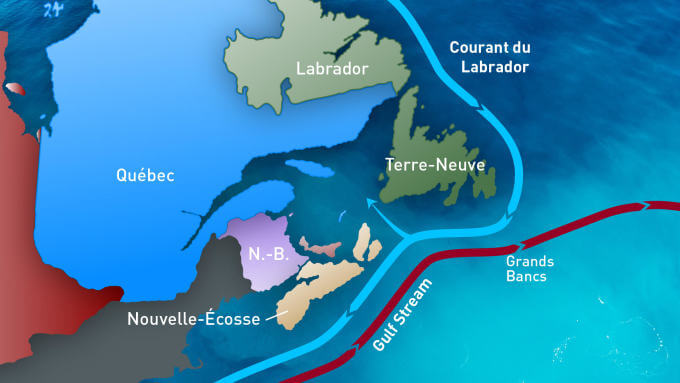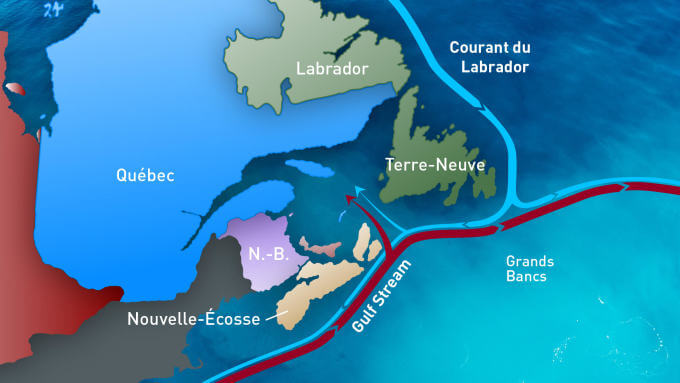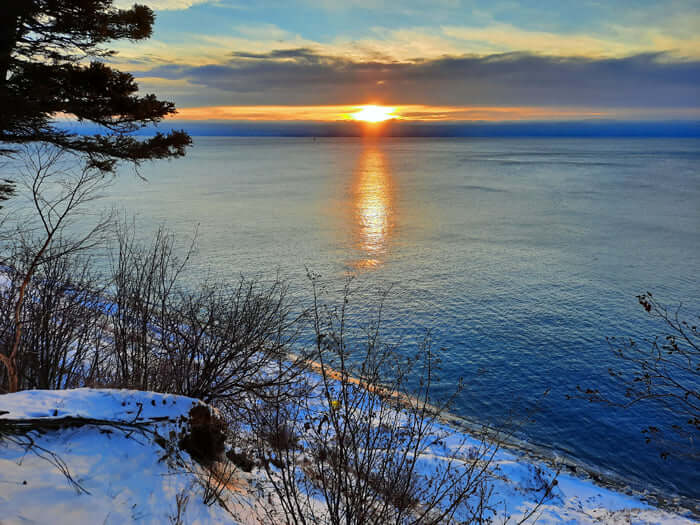The environment of cetaceans in the St. Lawrence Estuary and Gulf is changing. Peter Galbraith, physical oceanographer at Fisheries and Oceans Canada’s (DFO) Maurice Lamontagne Institute, presented on January 26 the results of the 2020 physical ocean assessment of the St. Lawrence.
By studying the surface layer, the intermediate layer and the bottom layer of river water, the assessment reveals that temperatures are trending upward. Such changes will cause biodiversity to take a different evolutionary path…
Disturbing new trend taking shape in deep waters
The results obtained for 2020 show that no cold water layer was present at the bottom of the Estuary (temperatures here reached 7.3°C). This is a new phenomenon: the Gulf is believed to be receiving more water from the Gulf Stream south of Newfoundland (via the Cabot Strait). These waters are warmer than those of the St. Lawrence. Warming had already been observed in the Gulf from 2016 to 2018, but the temperature reached in 2020 in the Estuary still goes beyond those peaks reached in the past. Temperatures of 7°C and above were reached in parts of the channels and Anticosti Island.
Climatologists are concerned by the greater influx from the Gulf Stream. The Gulf and Estuary usually receive not only warm waters from the Gulf Stream, but also cooler, more oxygen-rich waters from Labrador. In southwestern Newfoundland, the Laurentian Channel acts as natural mechanism to direct water from Labrador to the deep waters of the St. Lawrence. Labrador’s water deficit is therefore causing a drop in oxygen levels in the Gulf of St. Lawrence. Less oxygen means more hostile conditions for local biodiversity. This phenomenon is called hypoxia.
What is responsible for these changes in the sea currents? Wind. More precisely, CO2-laden wind. Now more abundant in the atmosphere, carbon dioxide steers a strong air current known as the jet stream toward the north. The jet stream pushes the warm Gulf Stream with it in the same direction, partially obstructing the cold Labrador Current. (photos of the 2 currents)
Mechanism at the base of marine life compromised
Typically, the mixing of warm and cold water occurs in the Laurentian Channel region. Waters reached temperatures of up to 7°C in some places, which unfortunately hindered this natural process. But that’s not all. “This is the first time I’ve observed the Estuary warming at the same rate as the Gulf,” notes the oceanographer.
These warm waters in the channel have a direct impact on the movement of sediment at the base of the food chain. Cold-water upwellings normally allows for sufficient nutrients to feed phytoplankton. These organisms form the basis of the food chain that marine mammals depend upon for food.
The results give cause for concern. The long-term survival of some cetaceans could be affected if the coldwater fish stocks they rely on begin to decline. Sediment inflow from deep waters is central to maintaining the fragile balance on which marine organisms depend in the St. Lawrence. On the other hand, certain species particularly adapted to warmer waters, such as copepods, have seen their populations rise in the northern Gulf. North Atlantic right whales benefit, as this is one of their favourite prey. Though some species may be at an advantage, predators attracted to food sources could find themselves at risk in an environment they are not accustomed to.
Too warm for ice
Every year, local residents can observe ice form and take hold of the St. Lawrence. In 2020 it became a rare commodity, with ice cover well below the long-term average. Mr. Galbraith commented on the particularly low volume of ice this year. He mentioned that by late January, ice should have reached the Anticosti region and the Magdalen Islands. “Right now, we should be seeing 15 km3 of ice in the Gulf, whereas we now have just 1 km3,” he affirmed. For 2021, we do not expect to see vast expanses of ice on the St. Lawrence. The absence of ice also has an impact on snow crabs in the Acadian Peninsula in the southern Gulf.
An ice-free St. Lawrence has only been recorded four times since 1958, but is believed to be a new reality. This situation is conducive to coastal erosion. But hope is growing, as biologists and citizens mount an initiative to minimize the impact of this erosion. Until we get a handle on climate change, the solution for some areas may lie in planting lyme grass on the riverbanks so that their roots can anchor the soil in place.









